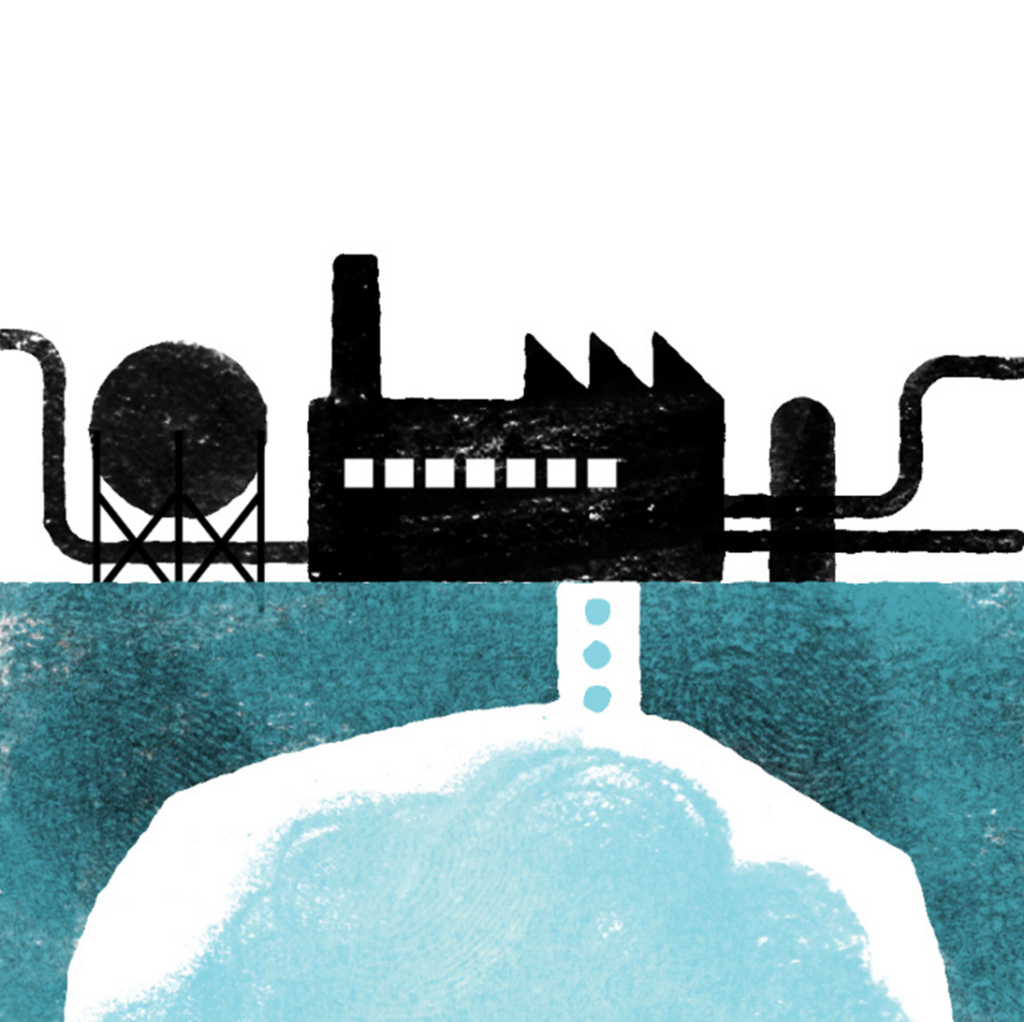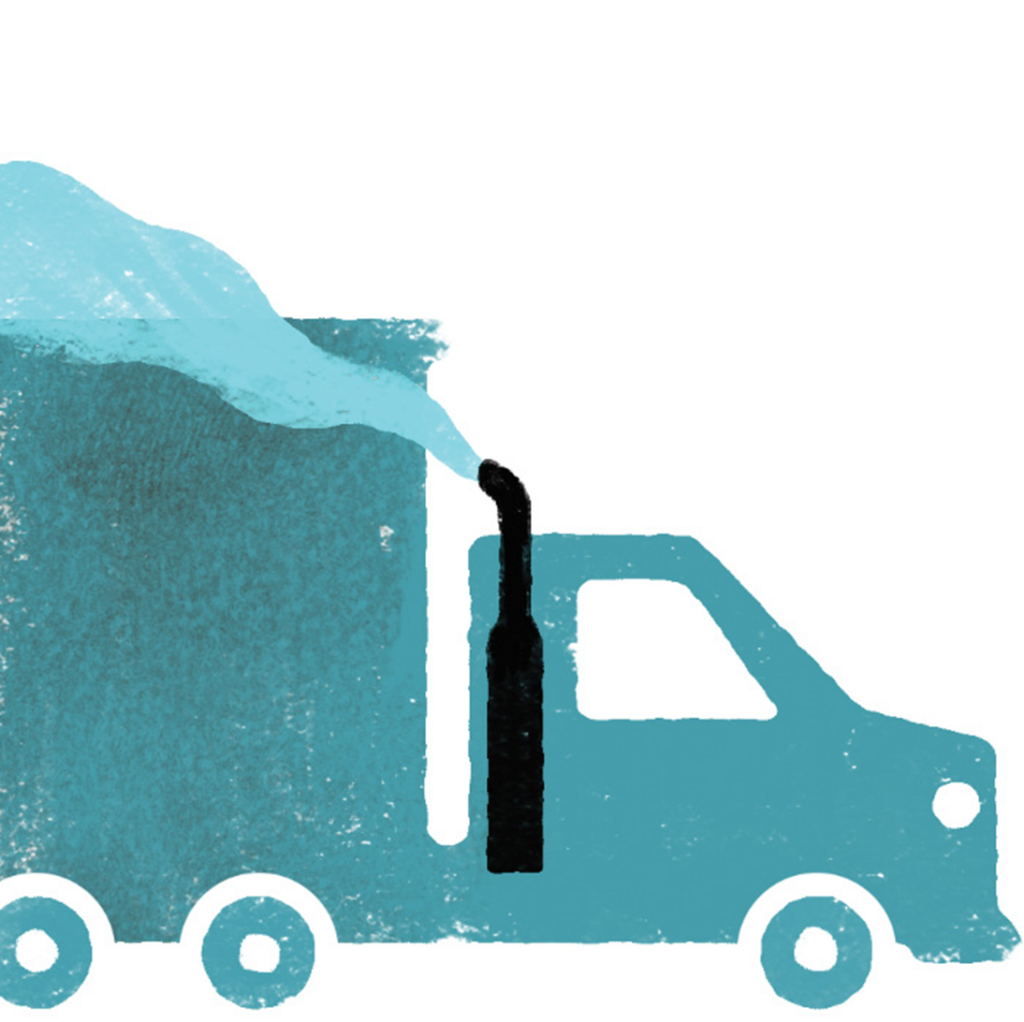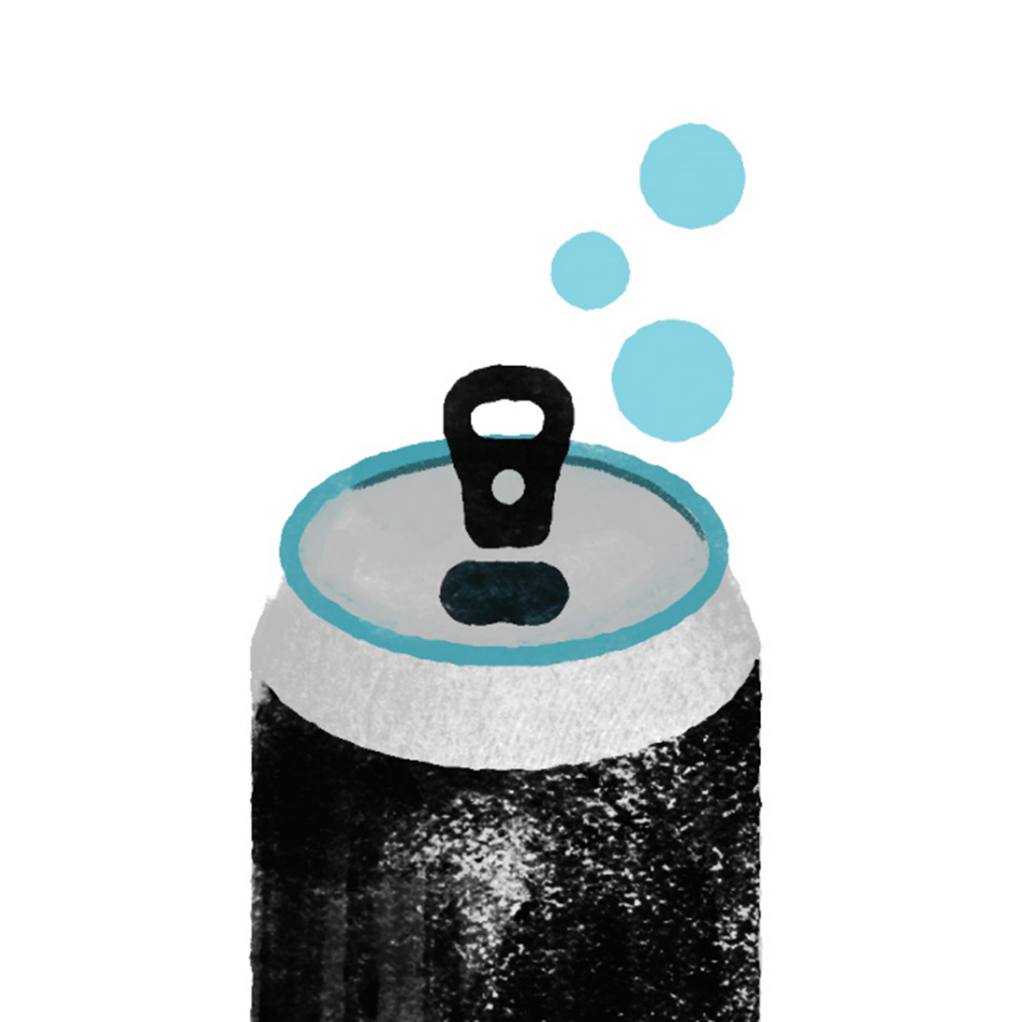In British Columbia, there’s a little valley where the Squamish River snakes down past the cliffs of the Malamute, a popular hiking spot. The hills in all directions are, like much of BC, thickly forested with firs. And nestled in that valley is a newfangled industrial plant that aims to replicate what those millions of trees do: suck carbon dioxide out of the air.
The plant was built by Carbon Engineering, a pioneer in the technology known as direct air capture (DAC). In a long, squat building, a huge ceiling fan draws air inside, where it reacts with a liquid chemical that grabs hold of CO2 molecules. This “sorbent” flows into a nearby machine that transforms the gas, which is then stored in pressurized tanks. The goal is to help rid the atmosphere of its most ubiquitous climate change culprit. The Squamish plant will process up to 1,000 metric tons of CO2 annually. That’s a minuscule drop in the bucket of the planet’s annual emissions, an estimated 33 billion metric tons last year, but this plant is only a pilot facility.
If the process can be scaled up massively, what might happen to all the captured CO2? There are several possibilities, CEO Steve Oldham explains. You could, for example, sell some of it to companies like soda makers or concrete manufacturers. You could also convert it into liquid fuel to burn in cars, trucks, planes, and power plants. That would release still more CO2, but in Oldham’s vision, which involves a vast network of his company’s machines, you would simply run that pollution right back through the process. You could do it over and over, he says, allowing a society to burn fossil fuels in perpetuity without adding to global warming. Call it catch-and-release. Oldham thinks we should all hop on board with this mode of carbon recycling: “We can’t wait. We have to get on with decarbonizing now.”
Given our plodding embrace of renewables, the IPCC figured we’d have to start pulling carbon directly out of the atmosphere by 2100. A lot of carbon. Ten billion metric tons per year.
Of course, governments around the world could go much further than catch-and-release. They could flat-out try to reverse climate change by using direct air capture to grab surplus atmospheric carbon and bury it deep in the Earth—rewinding the Industrial Revolution. Ridding the atmosphere of the billions of tons of so-called legacy carbon we’ve emitted over the past 150 years wouldn’t come cheap. At current prices, nations would have to shell out, collectively, about $5 trillion a year for the rest of the century. But a dire report in August from the UN Intergovernmental Panel on Climate Change (IPCC) warned that our climate situation could decline so rapidly that we are left with little choice. Policymakers may well decide that removing all that legacy carbon is worth the cost, Oldham argues. “I personally like the analogy of water treatment,” he says. “When water was a problem with cholera and typhoid, governments worldwide built a water treatment infrastructure. It’s part of what they provide to their citizens. Today we have an air problem, so we need an air-treatment infrastructure.”
Solving climate change with CO2-sucking machines? It sounds, at first, like something from a Neal Stephenson sci-fi novel—or a particularly delirious Silicon Valley TED Talk. And for years, indeed, DAC resided in mad-scientist territory. Only a handful of startups worldwide were fiddling with prototypes, and few serious investors were paying attention.
That all changed in 2018, with the release of an earlier IPCC report. The panel warned that if we wanted to keep the planet from warming by more than 1.5 degrees Celsius—the goal of the Paris agreement on mitigating climate change—we’d need to slash atmospheric CO2 dramatically. Planting forests would help. Shifting to renewables would be crucial, too. But given humanity’s plodding embrace of wind and solar, the IPCC figured we’d have to start pulling carbon directly out of the atmosphere by 2100. A lot of carbon. Ten billion metric tons per year, equal to nearly a third of our current CO2 output.
Direct air capture, along with other capture and sequestration schemes—from planting trees to figuring out how to make marine organisms lock up surplus carbon—was suddenly hot, perhaps even crucial to our long-term survival. Policymakers and corporations, and even some environmentalists, snapped to attention. By spring 2021, more than 100 of the world’s largest companies—including PepsiCo, Alaska Airlines, Colgate-Palmolive, and Wall Street giants like Morgan Stanley—had pledged to get to “net zero” emissions by 2040, and Elon Musk’s foundation put up $100 million for the XPrize, a four-year competition to spur development of any tech, including DAC, that results in “negative emissions.”
Public money has begun flowing in, too. The federal government and a couple of states have passed tax credits for firms that can pull carbon out of the atmosphere. The infrastructure bill the Senate green-lighted in August contains $11.5 billion for various carbon-capture efforts, including $3.5 billion to build four “regional direct air capture hubs” that the feds hope will create big networks of clean-energy jobs. The Democrats’ $3.5 trillion budget blueprint included $150 billion to compensate energy producers that switch to lower-emissions processes—a move favored by the swing vote of Joe Manchin—that could include direct air capture. And some Democrats are pushing higher tax credits for DAC in particular. In June, the Department of Energy announced a modest $12 million grant to support, as Energy Secretary Jennifer Granholm put it, the “brilliant innovators” developing DAC technologies that can “help us avoid the worst effects of climate change.” Even a few tech firms, like Stripe and Shopify, have budgeted millions to buy up CO2 sequestered by any reasonable means. “You’ve got this enormous momentum,” says Erin Burns, executive director of the think tank Carbon180.
In response, the DAC pioneers are gleefully rushing out new plants. Climeworks, based in Switzerland, is contemplating a facility in the Middle East. New York’s Global Thermostat is gearing up to create its first large-scale installation next year in Chile. Oxy Low Carbon Ventures (a division of the oil giant Occidental) will use Carbon Engineering’s technology to build a Texas plant eventually capable of removing up to 1 million metric tons of atmospheric CO2 per year, 1,000 times the rate of the Squamish facility.
This may all sound like a smart idea, but it grows more complex as you look closely at the world these companies envision. The only viable path to saving the planet, according to the entrepreneurs, is to get fossil fuel companies on board. That’s partly because Big Oil has the infrastructure and know-how to build these kinds of facilities at scale and to pipe captured CO2 to locations where it can be permanently sequestered. But it’s also because, in the eyes of the DAC inventors, internal combustion will be with us for a while yet. They envision using DAC mostly for catch-and-release over the next few decades: Harvest CO2 from the air, convert it into synthetic fuels, burn those fuels, and recapture the CO2. We wouldn’t start removing legacy carbon until 2060 or 2070 because only then will DAC, by small improvements, become cheap enough that companies and nations (at today’s tax rates, anyway) will be open to paying for it.
Their tech can save us in the long run, the inventors insist. In the meantime, they’re looking for help from the government—and from their partners at companies like ExxonMobil, Shell, and Occidental Petroleum.

Burial
CO2 is transported to locations whose underground geology enables permanent sequestration.
Downside
Requires 65,000-plus miles of risky pipelines.

Synfuels
CO2 is converted into liquid hydrocarbons to be burned in existing engines and power plants.
Downside
Extends fossil fuel era and creates additional pollution.

Enhanced oil recovery
CO2 is pumped deep into gas and oil wells to boost production output.
Downside
Extends fossil fuel era and requires pipeline expansion.

Manufacturing
CO2 is diverted to produce beverages, dry ice, cement, carbon-fiber materials, and more.
Downside
Existing markets are minuscule.
The Danger of Business as Usual
Many environmentalists view the game plan of the DAC visionaries as preposterous, a complex bank shot that can’t possibly work. The sheer scale of the endeavor “would make dealing with coronavirus look like playtime,” says June Sekera, a visiting scholar at the New School for Social Research, who analyzed 200 academic papers on DAC to identify its risks. Sekera came away from her analysis convinced that extracting, shipping, and burying so much captured CO2 would invite disaster.
Sure, one could co-locate DAC plants alongside synfuel plants, but to bury billions of tons of excess carbon permanently would be, Sekera says, a logistical nightmare. First you’d need to transport the CO2 from your DAC installations to locations with the type of subterranean rock needed to sequester the gas. This would require a web of specialized high-pressure pipelines crisscrossing the country. (Existing oil and gas pipelines won’t cut it.) We would need, by one estimate, at least 65,000 miles of them by 2050—12 times more than we have today. This and other considerations led the authors of a 2020 study in the journal Nature Communications to declare DAC an “energetically and financially costly distraction.”
CO2 pipeline leaks could be lethal. Heavier than air, the gas hovers near the ground, where it can sicken and asphyxiate pets, livestock, and people.
What’s more, CO2 pipeline leaks could be lethal. Carbon dioxide is heavier than the nitrogen and oxygen that dominate the air we breathe. If a pipeline breaks, concentrated CO2 initially hovers near the ground, where it can sicken and asphyxiate pets, livestock, and people. (Recent pipeline ruptures in Louisiana and Mississippi, where CO2 is used for enhanced oil recovery, sent dozens to the hospital.) And if history is any guide, the new pipelines would be routed through some of America’s poorest areas, says Carroll Muffett, CEO of the Center for International Environmental Law, who opposes DAC. “When you’re adding carbon capture or direct air capture at—or around—industrial facilities, those facilities are overwhelmingly concentrated in communities of color,” he adds. “That’s true not only in the US, but around the world.”
And finally, we have the energy paradox. The machines needed to suck up 10 billion tons of CO2 each year would consume more than half the world’s current energy supply, according to a 2019 study in Nature. Using DAC to build a closed-loop cycle with synthetic fuels would require even more energy, and a huge expansion of solar and wind capacity.
So why, environmentalists often wonder, would we bother to expend all of that clean energy on DAC? Instead, why not just push hard to electrify our economies and get rid of as many oil-burning engines as we can, as fast as we can? The sooner we do so, the less DAC we’ll need in the long run, says Lindsay Meiman, a communications specialist with the environmental group 350.org. “We have those solutions—we have them,” she says. “It’s about the political will and investment and the priority.” The government should prioritize investments in “free public transit to create millions of jobs that will dismantle these current fossil fuel projects.”
“Once you start doing the numbers, you realize that it makes much more sense to just eliminate most of your emissions,” says David Morrow, research director at American University’s Institute for Carbon Removal Law and Policy.
Perhaps the biggest problem with the way DAC is now being rolled out and subsidized, critics say, is that it lets fossil fuel interests go on with business as usual. As Muffett sees it, the petroleum giants regard partnerships with companies like Global Thermostat and Carbon Engineering as a survival ploy. Polluters spent the past few decades claiming they could capture CO2 from smokestacks to make coal- and gas-powered electricity emission-free, but they never did. Now they’re claiming we can extract carbon from the sky. For fossil fuel firms, “any technology that says, ‘Hey, we don’t have to stop emitting this stuff—we can just find a way to make it disappear,’ is highly desirable,” Muffett says.
A Progressive Case for Carbon-Sucking
Despite their deep skepticism, even many environmentalists repulsed by the fossil fuel industry have a nagging question in the back of their heads: What if carbon sequestration is necessary? What if humankind can’t—or won’t—move fast enough on renewables, and discovers later this century that the IPCC was right: We simply have to get rid of that excess carbon? Greenpeace’s Noël is hotly opposed to Big Oil and Gas. “We need to have a political, financial, and cultural full-court press to isolate the fossil fuel industry in all corners of life,” he practically shouted at me over the phone. “In policy circles they should not be allowed at the table. They should not be allowed to advertise. They shouldn’t be invited to any serious meeting.” He thinks they’re using DAC as a ruse: “The technology has been captured, manipulated, utilized, thrown into a PR machine.”
Yet still—still—Noël admits it’s probably a good idea for governments to fund scientists and engineers to work on DAC technologies. He’d like us to have the option in pocket, in case it’s ever needed. “I have a 9-month-old daughter and we’re at 415 parts per million” of CO2, he says. Given the serious effects we’re already seeing from climate change, Noël is deeply worried about what it’ll look like decades from now if we fail to hit the brakes on emissions. He’s fine with someone doing the work as long as it’s “fully decoupled from the fossil fuel industry.” Other environmentalists offered the same cautious approval. Morrow told me carbon-sucking should be our last resort, to be used sparingly only after we’ve shifted as much of the economy as possible toward renewables: “The role that DAC can play is an important but limited one, where we’re cleaning up stuff that we don’t have a good way to clean up otherwise, or drawing down legacy carbon.”
One can even make an explicitly progressive case for DAC. That’s the view of Holly Jean Buck, an assistant professor of environment and sustainability at the University at Buffalo, and author of the book Ending Fossil Fuels. Buck points out that America is not only wealthy—in part because we enjoyed cheap energy for decades while emitting CO2 freely—but we also have lots of land that’s geologically suited for sequestration; more than most countries. As a matter of environmental justice, the United States could pursue DAC at home to help counter the emissions of a developing global south: “We put away some carbon and other countries can continue to have more time to figure out what their transition pathway looks like.”
It’s also possible that, managed correctly, DAC could become a good source of union-scale jobs in the United States. Erin Burns, the head of Carbon180, points out that the solar industry has suffered politically here, in part because we ceded most of our panel-making to China, so solar has not yet produced many manufacturing jobs. (Installation jobs are booming, however.) We could do better this time around by developing policies that compel domestic DAC firms to use locally produced steel, pay union wages, and seek meaningful input from affected communities. Burns hails from southern West Virginia, where coal-mining communities haven’t reaped many good jobs from renewables: “We want to learn from that experience and say, ‘Okay, what does it look like to scale up direct air capture in a way that’s just and equitable?’”
Skeptics say direct air capture should be wrested away from the oil and gas industry. Yet no one has envisioned a clear path to making DAC a reality without it.
DAC skeptics all insist that control of the development and rollout be wrested away from the big polluters. Yet no one really has set out a clear path to make DAC viable without the fossil fuel sector. The government can fund researchers to figure out sequestration science and build prototypes, but it doesn’t possess the human or industrial resources to design and mass-produce DAC machines. Most large-scale things the government procures now are built by contractors anyway, so at best it would be outsourcing construction of government-owned CO2 pipelines and DAC machines to major industries, including oil and gas.
Even so, the public may have a surprisingly robust voice even in how the private sector tackles this problem. Because no free market yet exists for captured CO2, anyone pursuing DAC technology will require generous subsidies. This means, as Buck points out, that input and lobbying from environmental and public interest groups can shape the trajectory. For example, every skeptic I interviewed wants Congress to amend the 45Q credit so fossil fuel firms can’t collect when they use captured CO2 for oil recovery. Sen. Ron Wyden (D-Ore.) has proposed legislation—the Clean Energy for America Act—that would do precisely that. (Going out on a limb, Buck posits that the feds could even nationalize oil and gas companies and force them to roll out DAC. Those industrial giants helped create a socialized crisis, after all, she says, so maybe the public should take ownership of them, just as the feds took on massive—if temporary—stakes in several automakers after the 2008 bailouts.)
Lastly, the progressive argument insists that DAC isn’t our first tool of choice. Before devoting major public funds to incentivize it, we should first throw our subsidies at renewables. As for sucking up carbon, we’d want to pursue as many low-tech, nature-based techniques as possible. Just how far can we push reforestation? Ocean sequestration—such as treating beaches with chemicals that compel sand to suck up CO2 or growing plankton that metabolizes it—could be explored more aggressively. And though BECCS might be a boondoggle, farms do produce a lot of biowaste—about 104 million tons a year—that can be used for sequestration.
But we still might need those DAC machines. When I first spoke with Lackner, he argued that humanity had already blown far past the ideal time to step away from oil and gas. “In 1980, we could have said, ‘Let’s stop!’ And instead we procrastinated,” he told me. We’ll be lucky if his technology works as well as he hopes. When I visited his lab in the summer, it had the atmosphere of all the tech startups I’ve ever visited: a lot of excitement, but no guarantees. DAC is the classic industrial Wild West tale—nobody has any idea who’ll win or whether winning is even possible.
Yet Lackner is hopeful, in his dry and chill fashion. He took me outside to a gravelly construction area where, later this year, his team will install the first prototype of his next-generation carbon-sucking tree. A cherry picker stood in the middle of the ground. Lackner’s latest tree consists of a 30-foot stack of sorbent disks. It may not look like much, he said, but neither did windmills in the ’80s and ’90s and look how powerful they are today. “If we can pull wind energy out of the air,” he said, “we can pull CO2 out.”
This article has been excerpted and republished from Mother Jones.
Illustrations by Keith Negley


Community Discussion
Click here to start the discussion of this article.